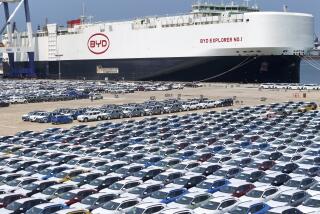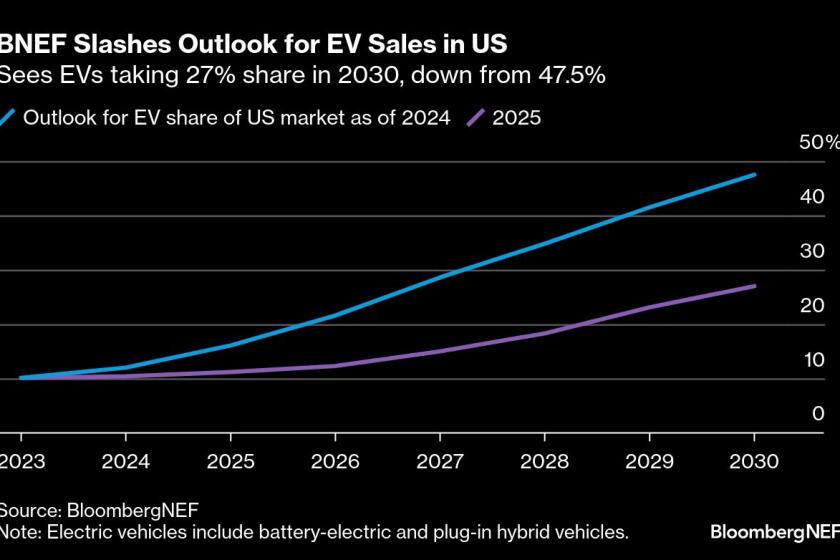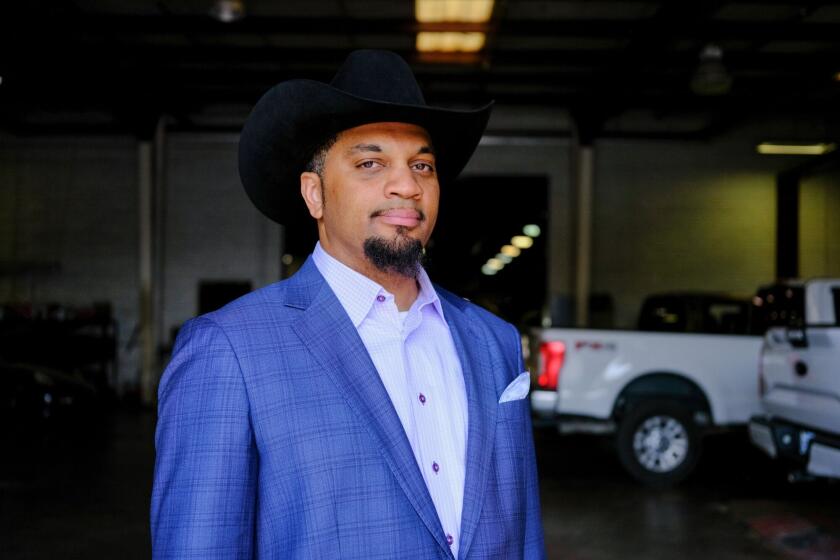Korean Cars Fight for Some Cachet
- Share via
It’s still not hip to have a Hyundai, but it was only a few decades ago that it was no thrill to tool around in a Toyota, either.
The Japanese auto makers have long since shown us that “made in Japan” is not code for “crud.” They routinely capture the crown in surveys of buyer satisfaction and initial quality and, of course, they have also captured nearly a quarter of the U.S. new-vehicle market.
Hyundai Motor Co. and its South Korean cousins, Kia Motors Corp. and Daewoo Motor Co., still have a long way to go--and a lot of image to build.
But they can now claim that “made in Korea” is nothing to laugh at.
Indeed, in the last year, sales of South Korean-made cars and trucks have soared an impressive 88%. That’s a pace that outperforms the U.S. passenger-vehicle market overall by a factor of almost 10.
Total sales are still comparatively small. The 329,571 South Korean vehicles sold in the U.S. last year amount to just one for every 35 of the traditional domestic models that moved out of dealer showrooms.
Still, that counted for a 2% share of the entire market, up from 1.1% in 1998.
And so far this year, the South Koreans have continued gaining ground, finishing April with a 2.4% market share. Sales are running 74% ahead of last year’s incendiary pace.
*
What gives?
It’s pretty simple, according to industry analysts.
The South Koreans still lead the U.S. market in value for price, packing goodies such as air conditioning, adjustable steering wheels, leather seating, alloy wheels, sunroofs and CD changers into cars priced thousands of dollars under similarly equipped Japanese and American models.
And now they also know at Hyundai and Kia and Daewoo that low price and loads of equipment alone do not a success story make in the hyper-competitive U.S. automotive market.
So they have been paying attention to quality issues, and the word is getting out.
No one is yet proposing that the South Koreans would win in an item-by-item quality showdown with Honda or Ford. In the just-released 2000 initial-quality study from the respected J.D. Power & Associates, Hyundai, Daewoo and Kia rounded out the bottom in 34th, 36th and 37th place, respectively. (Suzuki Motor of Japan came in 35th.)
“But their quality clearly is better, and their product offerings are better, and they have maintained that sweet spot in pricing and value. And all this has allowed them to get higher buyer awareness and greater acceptance,” says Wes Brown, an analyst with Nextrend, an auto industry market research firm in Thousand Oaks.
South Korea’s current generation of auto designers, engineers and marketers have learned from the painful experience of Korean car pioneer Hyundai, which launched U.S. sales in 1986.
Buyers responded then to the company’s Excel, a $3,995 economy model that filled a gap--simple, inexpensive, entry-level transportation--that the Japanese and American manufacturers had abandoned. By 1988, Hyundai was setting U.S. sales records for economy cars.
But the company’s quest for sheer volume saw South Korean management ignore warnings from executives at Hyundai’s U.S. headquarters in Fountain Valley who were concerned about quality issues.
Rather than slow production to improve and double-check the Excels it was punching out around the clock, Hyundai simply flooded the U.S. market with cheaply priced--and cheaply made--cars.
And buyers lured by price started finding that the cars had weak brakes, underpowered motors and undersized cooling systems. Hyundai swapped its reputation as a supplier of low-cost transportation for one as a supplier of lousy vehicles. Sales dried up.
It has taken a decade, but Hyundai replaced the Excel and re-engineered and redesigned every model in its North American stable several times as it worked to achieve quality and reliability levels that U.S. consumers could live with.
In the interim, upstart Kia launched U.S. sales from headquarters in Irvine in 1994 with a marketing message aimed at persuading Americans that it was not going to repeat rival Hyundai’s mistakes. Then Daewoo set up U.S. offices in Gardena in 1997 and began sales in 1998 with a trio of vehicles designed by a noted Italian styling house and engineered in a department headed by former top Porsche engineer Ulrich Bez.
All three companies still face lingering consumer doubts about South Korean-made cars, and all were hurt at home in their country’s long economic slump.
Hyundai, the largest and most sound of the nation’s auto makers, survived and seems to be prospering again. Kia nearly went under three years ago and was acquired in a government-backed sale by Hyundai, which now operates it as a separate, competitive unit. And Daewoo remains in bankruptcy and is on the sales block. Its assets are being eyeballed by DaimlerChrysler, Ford Motor Co., General Motors Corp. and Hyundai, among others. Industry expectations are that it will survive and even prosper with the cash backing and management of a strong parent.
Meanwhile, undeterred by the economic woes, all three companies continue to bolster their offerings in the U.S. with products that show improved design and engineering.
Hyundai, which has scored points with the automotive press for the quality and style of its current lineup, is adding its first sport-utility vehicle this summer with the Santa Fe, a mid-size car-based truck that will compete in a new category with vehicles such as the Ford Escape and Mazda Tribute. The company is also introducing a leather-clad, wood-trimmed near-luxury car, the XG, based on a model called the Grandeur that is sold in South Korea.
At Kia, which so far has the only South Korean SUV sold in the U.S.--the subcompact Sportage--plans to bring out a compact model, possibly late next year.
The Sportage augments the mainstream Sephia compact, Kia’s only passenger-car offering until the introduction this month of two more stylish stablemates: the sporty Spectra four-door hatchback, which shares the Sephia’s power plant and underpinnings, and the all-new Rio subcompact.
Kia will also beat Hyundai into the U.S. minivan market with the Sedona, set to arrive in June 2001.
At Daewoo, the only new offerings definitely on the table are the Korando subcompact SUV, due within the next 12 months, and the mid-size Magnus sedan, a 2002 replacement for the top-of-the-line Leganza that will offer a bigger interior and a V-6 engine.
About the only thing the South Koreans are not discussing, at least not out loud, are pickup trucks and roadsters--and both Hyundai and Kia have shown eye-catching two-seat ragtop concept cars at recent auto shows around the globe.
*
Times staff writer John O’Dell can be reached at john.odell@latimes.com
*
On the Upswing: * Hyundai has surpassed Japanese auto maker Mazda in U.S. sales, one illustration of the South Koreans’ brightening prospects here. C1






